1. Stay overnight
Hotel Koura
This family-run-establishment is one of the best budget hotels in the area. The rooms are comfortable and the lounge serves as a dining area. Breakfast is included in the price and the owner, Pierre Jabour, can organize day trips upon request.
Contact: +961 3 371 041 / +961 6 425 451
Chateau des Oliviers (Villa Nadia)
This hotel is set in a mansion on a hill just south of the city. It boats the unique taste of Nadia Dibo, its owner, consisting of 15 rooms, 4 suites, and one royal suite. Those with balconies have extraordinary views overlooking Tripoli, the mountains and the sea.
Contact: +961 6 411 170 / +961 3 151 512
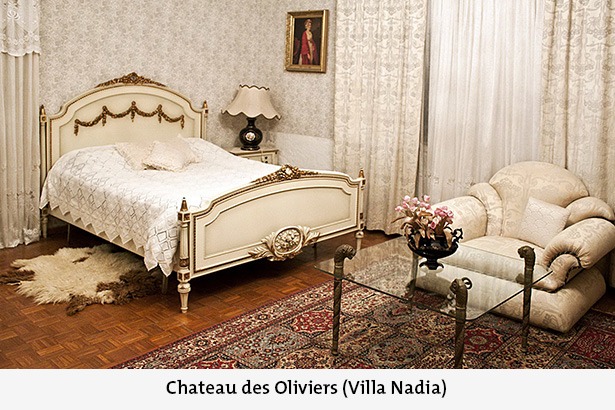
2. The Old Souks and Khans
Khan Al Saboun (Soap Market)
Traditionally made with olive oil, honey and other natural ingredients, the soaps supplied to the hammams in Tripoli make them an essential part of the city’s economy. Make sure to visit Sharkasi Soap Factory above the Souk and Badr Hassoun’s shop to discover the soap production process and sample over 400 kinds of soaps on offer. Do not miss the huge soap carved into the shape of an open volume of the Quran. The Khan Al Saboun was originally a military barrack during the Ottoman period and was eventually transformed into a market for olive and olive oil based products in the 18th century.
Contact: +961 6 874 483
Khan Al Saboun – Organic, Natural and ecofriendly beauty Products
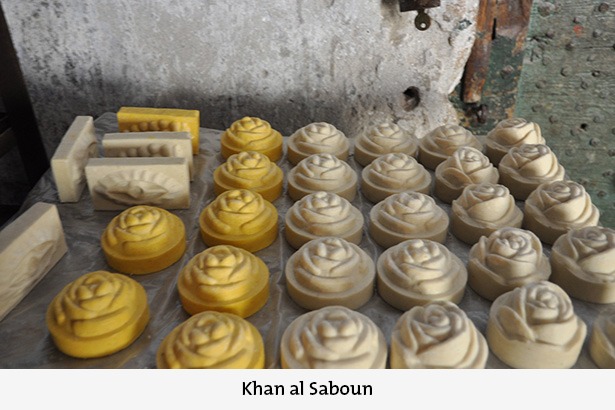
Khan Al Khayatine (Tailor’s Market)
The Khan Al Khayatine souk in Tripoli was built in the first half of the 14th century and renovated in 1974. It is the oldest souk of the city and has narrow winding alleys featuring tailor shops where you will find beautiful traditional clothing. Beautiful colors, unique textures and special designs are in display. The costumes for Lebanon’s most renowned dance troupes are made here.
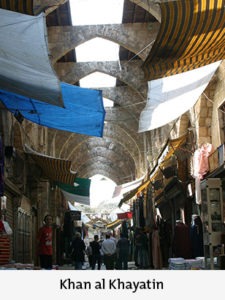
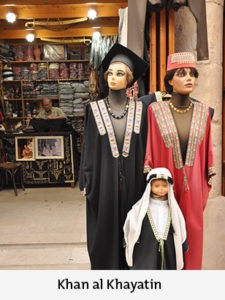
The Pottery Workshop
In Al Mina, Abu George the potter still turns his hand-made pottery on a traditional wheel. You wonder how much longer such skilled artisans will ply their trade as you watch the balanced symmetry of an elongated pot emerge from a rough lump of clay. None of his children are interested in learning the trade and he fears he will be one of the last to handcraft these increasingly rare artifacts.
Contact: +961 6 600 290 / +961 3 517 267
Al Azm Cultural Center
This center is a haven for all artists. Established in 1994, it is the first and most active cultural center in Tripoli, where creative people meet to share and discuss their work. The center organizes concerts, seminars and workshops to enhance the cultural life of the city. Make sure to check it out to uncover the local artist scene.
Contact: +961 6 444 448
جمعية العزم والسعادة الإجتماعية – الموقع الرسمي (azmsaade.org)
3. Architecture
The Taynal Mosque
The green-domed mosque, built ca.1336 by Governor Saif el-Din Taynal has a spectacular feature: the towering portal, tallest in the city, built inside the large vaulted vestibule that precedes the main prayer room. A relatively small door, within this huge portal, opens onto a large main prayer hall, also arched and vaulted with an elegantly carved wooden minbar (pulpit) dating from 1336. The Taynal Mosque lies south of the Old City. Built on the site of a ruined Crusader Carmelite church, some of its material was incorporated into the mosque, notably two rows of Egyptian granite Roman columns capped with Corinthian capitals.
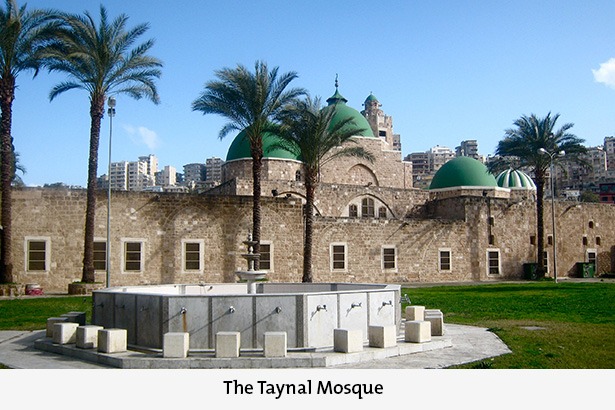
Al Madrassa Qartawiyya
Built by a Mamluk governor of the same name in the early 13th century, over the baptistery of an old cathedral, the Madrassa is well known for its fine workmanship evident in its elegant black and white façade topped by a honey-combed patterned half dome above the portal. Its back wall, also black and white, is adorned with beautiful Arabic calligraphy. The Madrassa is also known for having the only oval dome in Tripoli, which tops the prayer room.
Burj Es Sabaa (Lion Tower)
This miniature fortress at the far-eastern end of the Tripoli harbor (called Al Mina) is named after the lions decorations that decorated it once upon a time. It is an exceptional example of Mamluk military architecture with a striking black and white portico and older Roman columns used to reinforce the walls horizontally. If you do get there before 4 pm, ask the guardian of the place to take you to the top of the tower where you can catch a wonderful view of the abandoned Tripoli train station.
4. Shopping
Souk Harraj
This is the only covered souk in Tripoli. Granite columns, thought to be of Roman or Crusader origin, support the high vaulted ceiling of this 14th century edifice. Harraj, is the Arabic word for negotiate and at this souk you are encouraged to negotiate the price for items on offer such as mattresses, pillows and other bedding materials.
Saeh Library
One of the best-kept secrets of Tripoli, the Saeh library is a treasure island for book lovers. Dive into the shelves and dusty boxes to find infinite treasures of early edition books by Balzac and Hemingway, as well as many out of print magazines.
5. Religion
The Great Mosque
The construction of the Great Mosque began in 1294, on the site of the destroyed St Mary of the Tower church. It was completed in 1315, and probable traces of the 700-year structure can still be seen in its distinctive square minaret thought to have been the church’s bell tower. To enter, women are expected to wear one of the gowns provided and cover their heads. To the left the late 13th C Shamsiyah Madrasa, among the oldest in Tripoli, has above it the home of its founder, Judge Shamseddin al Iskandari. A typical wooden manzala (closed balcony) decorates its façade. The minaret of the Great Mosque is in fact the square Lombard bell tower of St. Mary’s church that once stood on the site.
Al Muallaq Mosque
This is a small simple yet unique mosque due to its unusual position over a vaulted passage. Located upstairs on the second floor of the building, it was built in the 16th century. It has a plain interior and leads down to a delightful courtyard garden where you can visit the tomb of its creator Mahmood Lutfi al Zaim.
Church Street
There are few churches remaining in Tripoli, as most were destroyed in 1279 when the Mamluk Sultan conquered the Crusader city. A few remain in the Church Street, hence the name. As you walk around, you will find Saint Nicolas that was originally a soap factory. The oldest Maronite church in Tripoli, St Micheal which was built in 1889, is located a little further. However, the oldest church of Tripoli is Saydet al Hara in Tabbaneh, which dates back to the 13th century. It was recently restored after the damages it sustained during the Lebanese civil war.
The Cathedral of St George (Al Mina)
Built in 1735 during the Ottoman period, this large and impressive building is patterned on a Crusader style basilica church. Below the church is a very old grotto, whose exact purpose and its origins are not known.
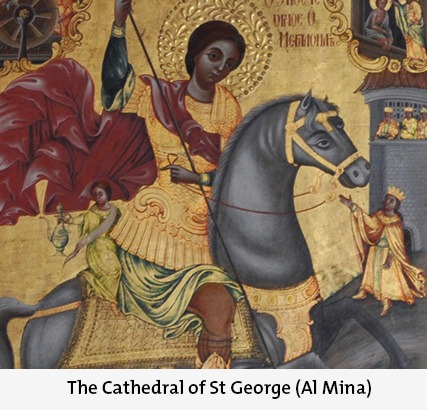
6. Nature
Palm Island Reserve
The Palm Island Reserve consists of three islands and covers a rough area of 5km2 of land and sea. Declared a protected site by UNESCO in 1992 and dedicated as a nature reserve in 1993, the island is populated with endangered species of rabbits, monk seals and turtles. It is also a stop for over 300 species of migratory birds. The largest island, Nakheel, features around 2,500 palm trees with paths laid out for visitors. After your stroll, you can take a swim or enjoy a picnic. The islands are open to the public from July to September. Negotiate your boat trip at the Mina, pack some food and float away to the preserved nature islands.
Contact: +961 6 204 525 / +961 6 600 673
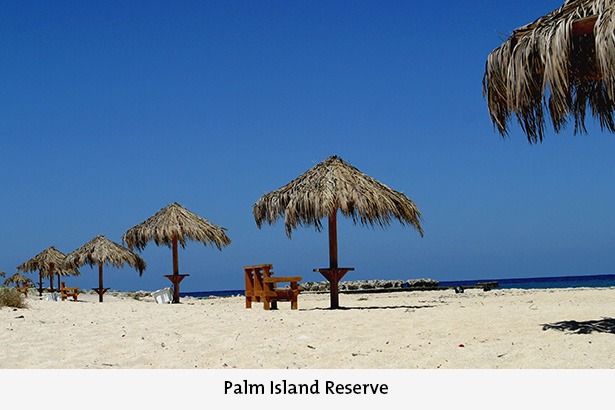
Al Mina
The history of the Al Mina port goes back way before the medieval times; however, few traces of this history remains. The port is today a promenade for natives and tourists alike, to rest after a long day of walking around the old city and enjoy local dishes and desserts.
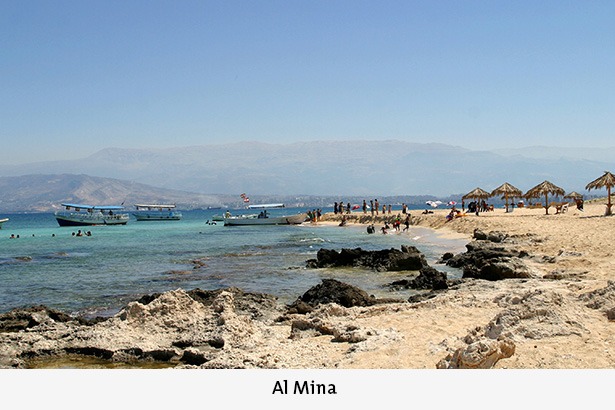
7. Modern structures
Tripoli International Fair
Tripoli is full of history but also has a special place for modern architecture. Commissioned in 1963, and designed by world famous architect Oscar Niemeyer, the Tripoli International Fair, also known as the Rachid Karame Fair, was abandoned mid-construction at the outbreak of the civil war. Today the fair ground hosts many big events.
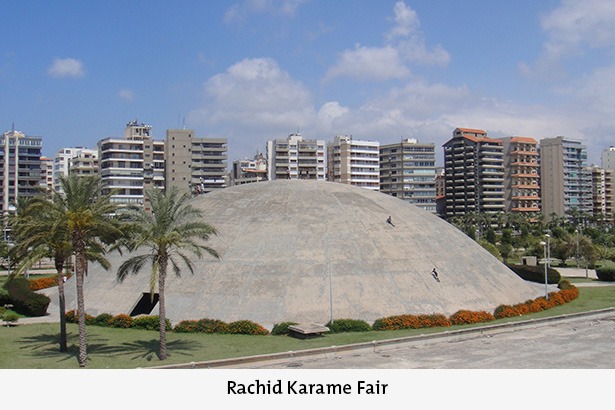
8. Hammam
Hammam Al Abd
Built in the17th C, Hammam el Abed is today’s only operational bathhouse in Tripoli. Open from 8am to 10 pm, it is unfortunately only open for men, unless you reserve ahead of time for a group of women. The hammam was built in the 17th century and has the typical pierced domes of the Mamluk an Ottoman era public bath. The interior with its cushions and central fountain is a vision by itself. Traditionally bathhouses were open to both sexes (different hours) and here prospective mothers-in-laws could view and select brides-to-be.
Contact: +961 3 724 556
Hammam Al Jadid
By far the largest hammam of the city, Hammam Al Jadid was built in 1740 and has not been operational since the early 1970s. However, it is the city’s best-preserved establishment. A gift to the city by Asaad Pasha al Azem, governor of Damascus, no expense was spared in its construction. A huge glass pierced dome dominates the main chamber and brings a dim light to a pool and fountain below.
Contact: +961 3 684 930
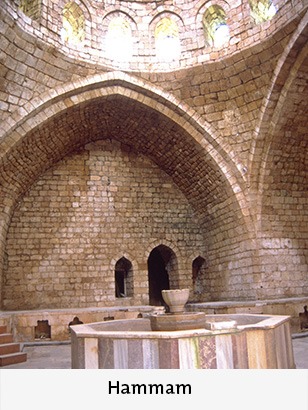
9. History
Ottoman Clock Tower
Walking through Al Tell square to view the renovated Ottoman Clock Tower, gifted to the people of Tripoli in 1901/2 by Sultan Abdel Hamid to commemorate the 25th anniversary of his Sultanate, we stop to admire some of the beautifully restored Ottoman buildings that surround the square.
Citadel St Gilles
The citadel St Gilles dominated the city of Tripoli and is one of its greatest landmarks. In 1102 AD, Raymond de St Gilles occupied the hill and decided to built a fortress on the beautiful location. The original castle was burnt down in 1289. Emir Essendir Kurgi rebuilt it with some additions in the 19th century. Today, the foundations are the only original remains. Explore alone or hire a guide, it is well worth a visit.
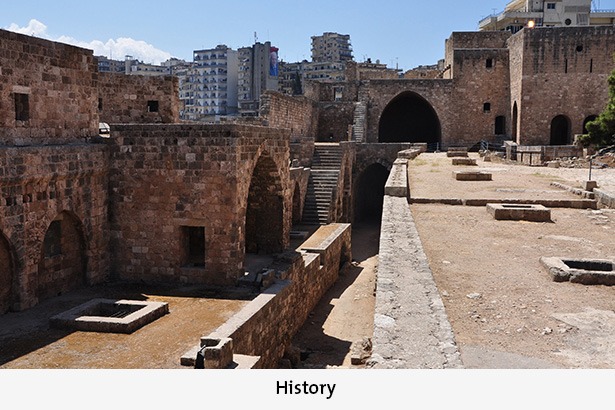
Madrassa Al Tawahiyat
This law school with its attached mausoleum dates back to 1471. Located on the main street of the gold souk, it is built of sandstone in alternating black and white patterns and has an unusual, finely decorated portal that towers above the building’s ornate façade.
Butrusiya Mosque and Madrassa
Built by the Kurdish prince, Sharafeddin Issa ben Omar al Butrasi, the construction is distinguished by the mosaic in its half dome, its square minaret, its black and white stonework and the intricately decorated and inlaid mihrab.
10. Food
Dabboussi
For a unique vegetarian moghrabiyeh sandwich
Tel: +961 6 447 668
Ich Ich
For ice cream made the traditional way in many flavors (near Al Mina)
Dannoun
For a delicious foul fatteh and hommos
Tel: +961 6 433 987
Silver Shore
For an unforgettable samke harra
Tel: +961 6 601 384
Tripoli tourism information office : +961 6 433 590
Read more: Mini Guide to Tripoli
Article edited on November 15, 2021
Loading
